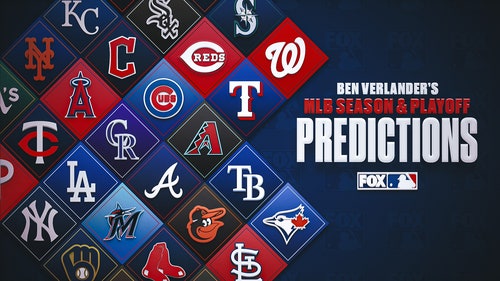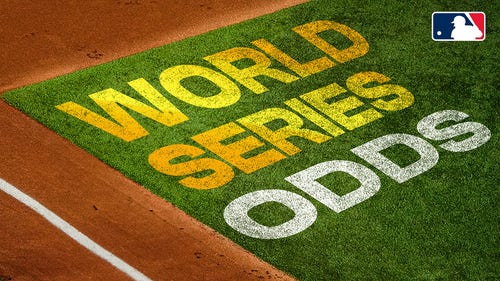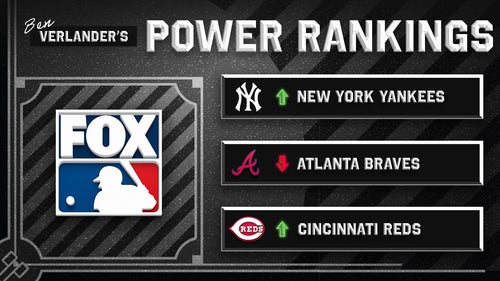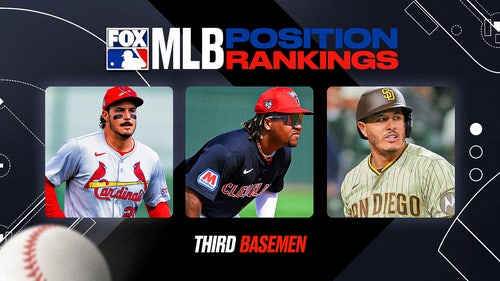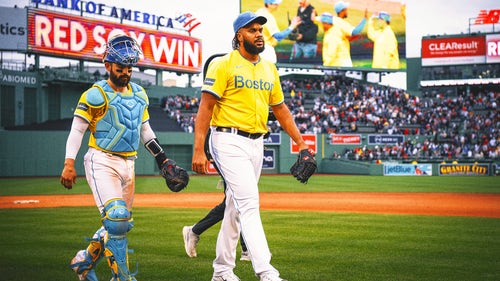
Boston Red Sox: David Ortiz's Return Supported by History
Whether or not we see David Ortiz back in a major league uniform in the near future, he is not the first to return from retirement. The success and failures of baseball’s “unretired” ballplayers increase the intrigue of Big Papi’s possible return.
Even after acquiring Chris Sale during the offseason, the Boston Red Sox still face the question of how to replace David Ortiz. While some believe it to be nothing, the Red Sox might not need to replace their beloved Big Papi since his recent Twitter activity possibly hinted at his comeback. After sending the Boston Globe a cryptic and vague tweet, Ortiz gave Red Sox fans a glimmer of hope.
— David Ortiz (@davidortiz) January 10, 2017
@davidortiz We are listening. You can tell us anything!
— The Boston Globe (@BostonGlobe) January 10, 2017
If Ortiz does find his way back to the diamond, he would join a list of ballplayers who retired, only to return to the major leagues after leaving the game. While many failed, like Jim Palmer, and others never made it back to the major leagues, such as Rickey Henderson, there are a number of ballplayers who returned from retirement. In Barry Zito’s case, he merely took the year off to prepare for his comeback in 2015. Although many considered it a failure, it proved a sentimental moment for Bay Area baseball fans.
Here’s to you, Boston faithful and Ortiz fans. The following slideshow identifies the ballplayers who managed to reach the major leagues after retirement.
Andy Pettitte
Since debuting with the New York Yankees in 1995, Andy Pettitte pitched 18 seasons with unrewarded success. While he bragged three All-Star appearances, Pettitte left the game without any major regular season awards. He reached the top five for the Cy Young Award four times, including finishing second behind Pat Hentgen in 1996. His name also appeared in the AL MVP voting in 1996 and 2005, but he never finished higher than 14th.
Regardless, the five-time World Series champion and 2001 ALCS MVP threw a pair of 21-win seasons in his career. Prior to his first stint of retirement, Pettitte averaged 15 wins per season with a 3.88 ERA.
His career would have ended in 2010, where Pettitte was an All-Star and went 11-3, if he followed through with his initial plans to retire. After a year of watching the Yankees from the stands, Pettitte realized he had some gas left in the tank.
Aware of his desired comeback, the Yankees signed their former starting pitcher to a one-year minor league contract in 2012. After a four-start stretch in the minors, the Yankees recalled Pettitte to the majors in mid-May. After losing his first start, he recovered to a 5-4 record and 2.87 ERA. His success prompted the Yankees to resign Pettitte for his final year in the major leagues. He finished his career by going 11-11 with a 3.78 ERA in 2013.
Two years following his official retirement announcement, the Yankees honored Pettitte by retiring his number on August 23, 2015. His number, No. 46, joins legends Babe Ruth and Lou Gehrig, along with teammates Jorge Posada and Mariano Rivera in Yankee fame.
Minnie Minoso
While every ballplayer says they love baseball, none love the game more than Minnie Minoso. His love for the National Pastime irresistibly drew him out of retirement on two separate occasions.
Within 17 years in the major leagues, Minoso built a career than spanned from 1949-1980. Playing his final game at nearly 60-years-old, he is the only ballplayer in history to play for five decades.
Shortly after debuting with the Cleveland Indians in 1949, the Indians sent Minoso to the minor leagues for 1950. Due to crowd control at third base, Cleveland gave Ken Keltner the hot corner while Minoso patiently awaited his return to the majors. Once Minoso regained his major league rank in 1951, his stint with the Indians quickly came to an end. A three-team trade sent Minoso to the Chicago White Sox, where he grew into a star.
Minoso capped 1951 with a .326 batting average and a career-high 31 stolen bases. From there, he consistently appeared on the next four All-Star rosters from 1951-1954. Through his career, Minoso finished fourth for the AL MVP four times and received three Gold Gloves. He left the major leagues without a World Series ring, but obtained a much rarer achievement.
Record-Breaking Quest
Eleven seasons after his retirement in 1964, White Sox owner Bill Veeck invited his franchise’s hero back to the field in 1976. At the age of 51-years-old, Minoso played in three games, took eight at bats and connected for the final hit of his career. In so doing, he joined Ted Williams and Mickey Vernon as the only three, non-pitchers to play over four decades.
Intrigued by this new record-breaking quest, Veeck invited Minoso back again in 1980. Although he went hitless in two at bats and their plan to bring him back again in 1990 to send of Cominskey Park was denied, he stands apart as the only ballplayer to play in five decades.
Early in 2015, Minoso passed away at the age of 90-years-old. Proven to be one of baseball’s greats and a true civil rights icon, the White Sox honored his legacy during Spring Training.
Roger Clemens
Credit: dailymail.co.uk
Bound to become one of the greatest pitchers in baseball history, Roger Clemens broke into the major leagues in 1984. However, he almost cut his historic career short by four years when he announced his retirement in 2003.
Following 13 seasons with the Boston Red Sox, Clemens pitched for the Toronto Blue Jays and New York Yankees before he temporarily left the game. Through 2003, Clemens stood 310-160 with a 3.19 ERA and six Cy Young Awards. When Clemens won his first Cy Young Award in 1986, he also took home the American League MVP award thanks to his 24-win season. After helping the Yankees to back-to-back World Series championships, Clemens went on to make his eighth and ninth All-Star appearance.
Once his contract with the Yankees expired in 2003, the Rocket left many confused with his decision to retire. He came three wins away from matching his 20-win season in 2000 with a 17-9 record. Furthermore, Clemens managed to bring his ERA down from 4.35 in 2002 to 3.91 at the end of 2003.
As it turned out, Clemens’ first round of retirement hardly lasted the offseason. His hometown team, the Houston Astros, offered the veteran pitcher a $35.2 million, three-year contract.
The Astros’ gamble on Clemens turned out for the best. The three years following his first retirement consisted of two more All-Star appearances, a career-low 1.87 ERA in 2005 and his final Cy Young Award in 2004. Beginning to show signs of fatigue, Clemens singed a one-year deal with the Yankees before officially retiring in 2007. He left baseball to enter a world of allegations and shame following his accusations of using PEDs during his career.
Troy Percival
Five years after selecting him in the sixth round of the 1990 draft, the California Angels called Troy Percival up in 1995. Through his ten-season stretch in Los Angeles, Percival grew into their beloved closing pitcher. He averaged 32 saves per season and held a 2.99 ERA as an Angel. He pitched a career-low 1.92 ERA in 2002, en route to the Angels’ first franchise championship, and topped out with 42 saves in 1998. Before he left Southern California, Percival pitched eight 30-plus save seasons.
Not long into the 2004 offseason, the Detroit Tigers signed Percival onto their pitching staff. Unfortunately, a forearm injury held him back from bringing his success with the Angels to the Tigers in 2005. His injury reflected in Percival’s 1-3 record and 5.76 ERA. Not to mention, he only mustered eight saves in 23 games finished. Although he reported to Spring Training with Detroit in 2006, he threw in the towel after a rough outing and retired before the start of the season.
After enjoying a year of retirement, the Angels invited their former closer to Spring Training as a guest instructor. Little did anyone know as Percival laced up his turf shoes in Arizona, that he still had three seasons in the tank.
After spending the first half of the season training, the St. Louis Cardinals and Tampa Bay Devil Rays gave Percival a chance to further his career. He went 3-0 with the Cardinals in 2007, complimented by his 1.80 ERA in 34 games. The following year, he took on the role as the Devil Rays’ closer and notched 28 saves in 38 finishes. He ended his career in Tampa Bay, where he pitched only 11 innings and posted a 6.53 ERA. Satisfied, he accepted retirement after adequately finishing his career.
Ryne Sandberg
What Michael Jordan was to the Chicago Bulls, Ryne Sandberg was to the Chicago Cubs for nearly two decades. Starting in 1982, Sandberg grew into the face of the Cubs until his actual retirement in 1997. Amidst his 16-season career, Sandberg almost prematurely brought his career to an end in 1994.
Since finishing sixth for the Rookie of the Year and winning a Gold Glove in 1983, Sandberg took home the NL MVP award in 1984. His award-winning season sparked 10 consecutive All-Star appearances, where he started at second base in all, but one Mid-Summer Classic.
Needless to say, Sandberg vastly outperformed the Cubs. Prior to Sandberg’s first retirement, the Cubs only won two 90-plus games and finished above .500 three times. More disappointment met the Cubs minuscule success at every turn. The Cubs managed to reach the postseason twice with Sandberg, only to fall short in the NLCS.
Whether it was the Cubs’ lack of success or his desire to be with his family, Sandberg abruptly retired in the middle of 1994. The Cubs clearly felt the loss of their superstar and spiraled to a 49-64 season.
Seventeen months came and went before Sandberg felt the tug to return to the diamond. As he watched the rejuvenated Cubs battled for wild-card contention in September, Sandberg realized his mistake in 1995.
With refreshed inspiration, Sandberg returned to the Cubs in 1996 with the enthusiasm of a much younger man. Regaining his full-time role at second base, Sandberg batted .244 with 25 homers. Per a $3.2 million deal, the Cubs extended Sandberg’s career for another year before he officially retired in 1997.
Tony Conigliaro
Hypotheticals surround the unfortunate case of Tony Conigliaro and his injury-shortened career. The potential of his early career came to a sudden halt with one missed pitch.
Although he signed as an amateur free agent in 1962, Conigliaro looked more like a first overall draft pick. He started his career by setting the single-season, teenage home run record with 24 in 1964. He went on to lead the majors with 32 four-baggers the following season. Add in two 20-plus home run seasons and Conigliaro reached 104 home runs through before disaster struck.
August 18, 1967 started off not unlike any other baseball game. In front of a sellout crowd at Fenway Park, Conigliaro assumed right field as he had since his rookie season. Already 1-1 against Jack Hamilton of the California Angels, he came back for his second at bat in the fourth. A smoke bomb thrown by a rowdy fan from the stands delayed the game for 10 minutes.
When play resumed, Hamilton’s first pitch suddenly broke towards Conigliaro. Regardless of his efforts to move out of the way, the oncoming ball hit him square on the left cheekbone. With his mother, father and brothers in the crowd, Conigliaro was escorted off of the field with a dislocated jaw and damaged retina. As the Red Sox went on to the beat the Angels, the injury forced Conigliaro to miss the rest of the season and all of 1968.
Return, Retirement and Return Again
Upon his return in 1969, Conigliaro became the Comeback Player of the Year by hitting 20 homers and batting .255. He continued to live up to his potential in 1970 when he set a career high with 36 home runs.
However, shortly following his trade to the Angels, his eye began to worsen. Due to the sudden deterioration of his left eye, Conigliaro announced his reluctant, yet necessary, retirement.
With hopes of another comeback, Conigliaro came out of retirement to play one season with the Red Sox in 1967. Once the season ended and Conigliaro finished with a .123 batting average and two homers, he accepted the end of his career.
The story of Conigliaro only worsened after 1975. Seven years after his final major league game, he suffered a heart attack that led to a stroke. Eventually, after falling into a coma, Conigliaro passed away in 1990 at the age of 45-year-old. Given the success at the start of his career and even after his recovery, all fans can do is wonder what he would have been if not for Hamilton’s errant fastball.
Dizzy Dean
The tale of Dizzy Dean’s return the major leagues happens to be one of the most interesting, and untold, stories of baseball.
The Great Man, as many referred to him as, began his career in with the St. Louis Cardinals in 1930. Following his debut, Dean finished the season in the minor leagues and missed all of 1931. Once Dean returned to the major leagues, his success increased just as gradually as it decreased towards the end of his career. After finishing in the top 20 for the NL MVP award in 1932 and 1933, Dean finally won in 1934 with his 30-win season. In the same year, Dean went 2-1 against the Detroit Tigers to bring St. Louis the World Series championship.
Over the next two seasons, Dean finished second for the MVP and won at least 24 games. Unfortunately, after the Cardinals traded him to the Chicago Cubs in 1938, he never regained his former dominance. He averaged eight starts and four wins in the last four seasons of his career. He started one game in 1941 against the Pittsburgh Pirates for the final game of his career.
Or so he thought.
After his career, Dean broadcasted for the St. Louis Browns, where he fearlessly voiced his criticism of the team. With the Browns out of contention and bound for a 58-96 season, they decided to test their broadcaster and challenged him to start the final game of 1947. They wanted to see if the 40-year-old could outpitch their staff as he claimed. Although Dean outpitched the Browns, shutting out the Chicago White Sox through four innings, he ended up pulling a muscle to officially end his career.
More from Call to the Pen
This article originally appeared on








































































































































